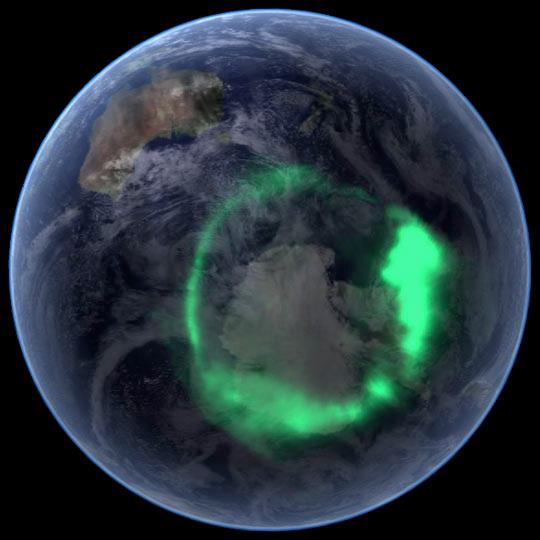To Lubio Cardozo for
his grammatical contributions
to the concept of
Boreal Bioregions.
Bioregion: "Space of life delimited by" soft limits "and that
It is characterized by the similarity of flora and fauna, climate and geology.
(Turtle Island Bioregional Congress, USA).
"A bioregion can be determined
initially from the climatology,
the physiography, the geography of the animals
and the plants, the natural history
and other descriptive natural sciences.
But who best describes the limits
Definitions of a bioregion are the
same people who have lived, through the
human recognition of the realities
to live-in-the-place "
(Berg P. 1997)
Etymologically, "bio" comes from the Greek word that refers to life; "region" comes from the Latin regere or territory to be governed. That is to say, a bioregion would be a living territory, a place delimited by the forms that life adopts, by its topography, by its biota, a region governed by nature. It could be said then that a bioregion is an area or territory defined by its geographical and natural characteristics and inhabited by plant and animal communities (among these, human communities), with different features of the territories that surround it. Similarly, one could say that bioregionalism aims to be a way to manage a territory with criteria that respect life, or in other words, a self-sustained regime of a territory.
 In the early 1960s, environmentalist Peter Berg defined the concept of bioregionalism as "a geographic area defined by natural features, including watersheds, landforms, soils, geological qualities, native plants and animals, and climate, which includes being human as a species in the interaction of these natural characteristics ". Berg refers to both a geographical terrain and a terrain of consciousness - to a place and the ideas that have been developed about how to live in that place. Within a bioregion, the conditions that influence life are similar and these in turn have influenced human occupation. It is a theory that is based on the identification and study of ecological zones or regions (bioregions). The application implications of this theory have repercussions from the cultural, political, economic and environmental point of view. The bioregionalism is focused from the ethical, political, ideological, and subdivides territories as homogeneous sets from the anthropic, ecological and morphological point of view of energy.
In the early 1960s, environmentalist Peter Berg defined the concept of bioregionalism as "a geographic area defined by natural features, including watersheds, landforms, soils, geological qualities, native plants and animals, and climate, which includes being human as a species in the interaction of these natural characteristics ". Berg refers to both a geographical terrain and a terrain of consciousness - to a place and the ideas that have been developed about how to live in that place. Within a bioregion, the conditions that influence life are similar and these in turn have influenced human occupation. It is a theory that is based on the identification and study of ecological zones or regions (bioregions). The application implications of this theory have repercussions from the cultural, political, economic and environmental point of view. The bioregionalism is focused from the ethical, political, ideological, and subdivides territories as homogeneous sets from the anthropic, ecological and morphological point of view of energy. The history of bioregionalism was formalized in the early 1970s. Canadian poet and biographer Allen Van Newkirk was the first to use the word "bioregion" in an article entitled "Bioregions: Towards a Bioregional Strategy for Human Cultures", published for the first time in Environmental Conservation and later in CoEvolution Quaterly. Where it reaches the conclusion that the community of living beings, which interact with each other and with their physical environment, according to the organized in sets that show the continuity between physical and ecological characteristics. But it has been, without any doubt, Berg (1977) who has done most to popularize the word and its meaning, especially after the publication of the article "Strategies for Reinhabiting the Northern California Bioregion", published in a journal of the bay of San Francisco, of small distance, along with Dassmann (1977), with its article "Reinhabiting California", appeared in The Ecologist. Berg and Dasmann affirm that human cultures differ on a bioregional scale: that at the bioregional level, the "geographical terrain" coincides with a "terrain of consciousness", expressed in specific cultures. These, in turn, help shape the land, as do the aboriginal peoples who change the landscape of southern New England through the controlled use of fire (Carr, 1990). Bioregionalists have sought to see a correspondence between the native "culture areas" mapped by Kroeber and their own conceptions of bioregions or other regional configurations, such as vegetation regions mapped by Shelford (Carr, 1990).
The history of bioregionalism was formalized in the early 1970s. Canadian poet and biographer Allen Van Newkirk was the first to use the word "bioregion" in an article entitled "Bioregions: Towards a Bioregional Strategy for Human Cultures", published for the first time in Environmental Conservation and later in CoEvolution Quaterly. Where it reaches the conclusion that the community of living beings, which interact with each other and with their physical environment, according to the organized in sets that show the continuity between physical and ecological characteristics. But it has been, without any doubt, Berg (1977) who has done most to popularize the word and its meaning, especially after the publication of the article "Strategies for Reinhabiting the Northern California Bioregion", published in a journal of the bay of San Francisco, of small distance, along with Dassmann (1977), with its article "Reinhabiting California", appeared in The Ecologist. Berg and Dasmann affirm that human cultures differ on a bioregional scale: that at the bioregional level, the "geographical terrain" coincides with a "terrain of consciousness", expressed in specific cultures. These, in turn, help shape the land, as do the aboriginal peoples who change the landscape of southern New England through the controlled use of fire (Carr, 1990). Bioregionalists have sought to see a correspondence between the native "culture areas" mapped by Kroeber and their own conceptions of bioregions or other regional configurations, such as vegetation regions mapped by Shelford (Carr, 1990). According to Alexander Donald, there are four possible approaches to delineating bioregions, and examples of each can be found in the bioregional bibliography. First, one can take an environmental deterministic position: the view that nature determines culture within the context of specific regions (Sale, 1985). In arguing this position, one has to be specific about the geographic criteria one uses: hydrology, physiography, climate, vegetation or animal life. Each will give a bioregion of different size (and configured). Or, as an alternative, are we talking about a fusion of all these criteria, which can only be revealed through some methodology not yet specified?
According to Alexander Donald, there are four possible approaches to delineating bioregions, and examples of each can be found in the bioregional bibliography. First, one can take an environmental deterministic position: the view that nature determines culture within the context of specific regions (Sale, 1985). In arguing this position, one has to be specific about the geographic criteria one uses: hydrology, physiography, climate, vegetation or animal life. Each will give a bioregion of different size (and configured). Or, as an alternative, are we talking about a fusion of all these criteria, which can only be revealed through some methodology not yet specified?
Even taking into account that cultural phenomena are the ultimate determinants of bio-regional boundaries, geographical boundaries differ depending on hydrology, vegetation, physiography or wildlife. In the same way, different cultures are related to different aspects of their environment, and their spatial manifestations will differ accordingly.
Gustavo Carrasquel in his book Bioregiones de América defines the bioregion as "a relatively large geographical area that is distinguished by the unique character of its morphology, geology, climate, soils, hydrology, flora and fauna." In general, they also share the same culture and they have the same problems so they can use the same appropriate and renewable technologies to solve their problems. "
Based on the above epistemological basis we can conceptualize that the Boreal Bioregion is the largest forest biome on the planet, covers 11% of the Earth's total land area and constitute 25% of the closed forests of the planet, these being a forest system continuous and uninterrupted, and this is located the north of the European Russia and Siberia, the Scandinavian countries Sweden, Norway and Finland of northern Europe, the northern region of the Hudson Bay, northern Canada and the state of Alaska , having as a border in the south the steppes and to the north the tundras or polar region. This bioregion lies between the latitudes of 50 ° N and 70 ° N, and inhabits a set of natural communities that share their species and ecological dynamics, similar environmental conditions and interact in a determinant way for their subsistence.
From the human point of view, it is the ancestral territory of aboriginal peoples that present common features both those of the Eurasian borealis, such as those of the Greenlandic or the American, where their adaptation to the environment beyond the biological limit, cultural adaptation is the that has made survival possible. These aboriginal populations of the most northern regions of the planet, seem to have a common origin, as indicated by recent genetic studies. The Mongoloid morphological traits shared by different peoples suggest an Asian origin. In the case of the Uralian peoples, as we move towards the west, the Mongoloid characteristics diminish, so that the more oriental peoples (Nganasans, Samoyeds, Ensi) are clearly Asiatic, while the more western (Saami, Komis) they are more like the Europeans. From all this, derives the current great diversity of the peoples of the Eurasian. At the northern end of the American continent we distinguish three peoples: the Inuits (who also occupy the western costs of Greenland and the Chukchi peninsula), the Aleutians (in Alaska, the Aleutian Islands and Komandorski), and the American Indian tribes. These aboriginal peoples of the boreal bioregion have as their main activity caribou hunting, reindeer herding and fishing, leading some to a semi-nomadic life.




No hay comentarios.:
Publicar un comentario